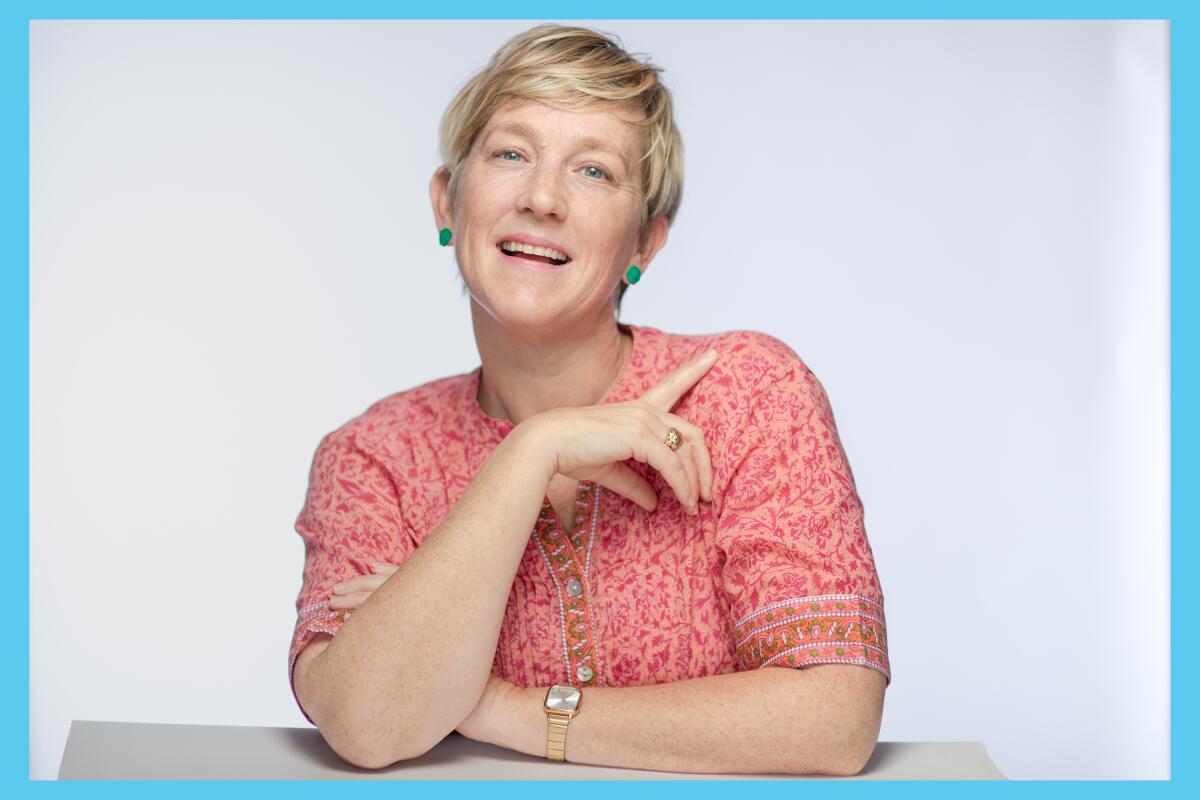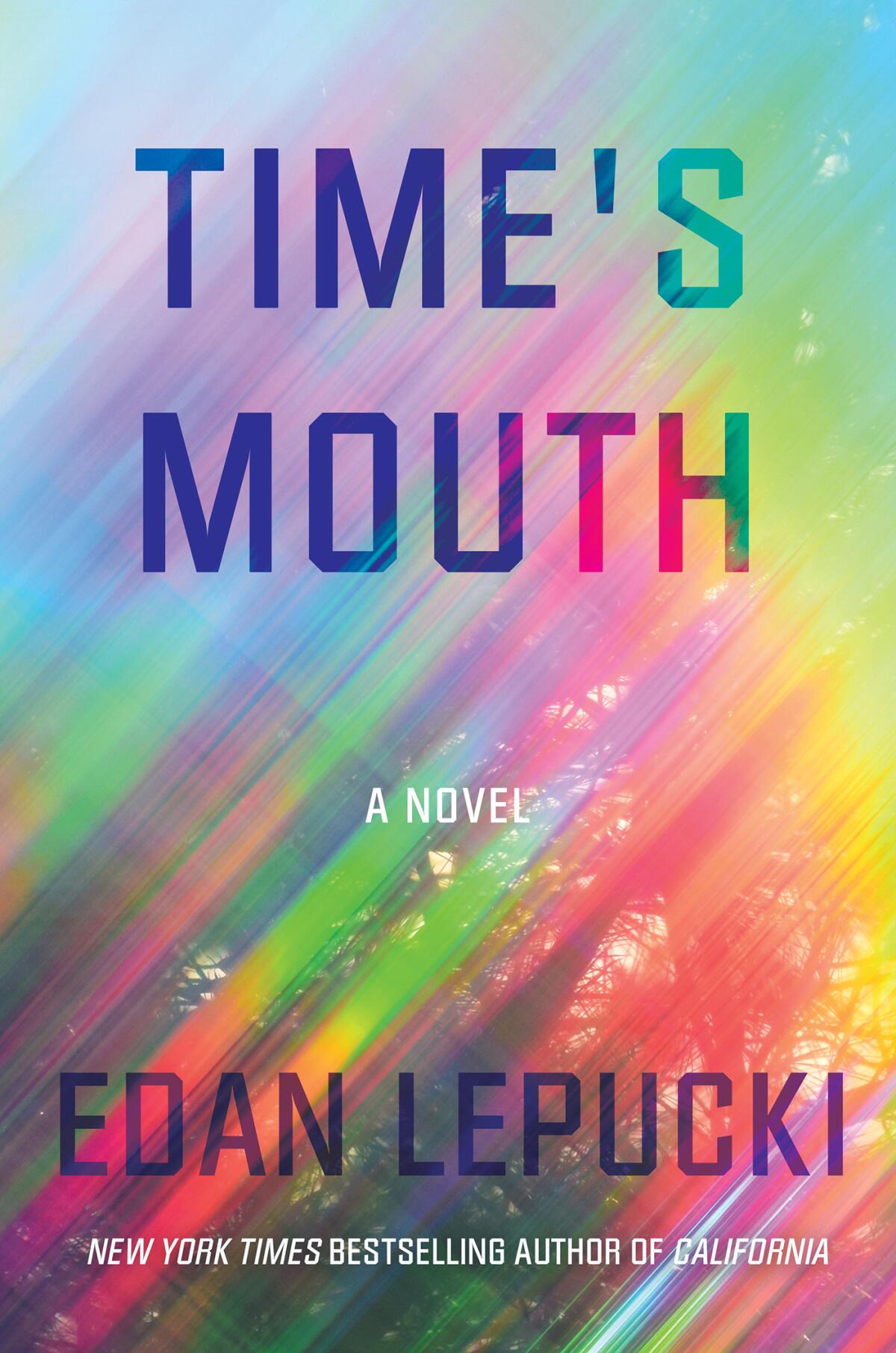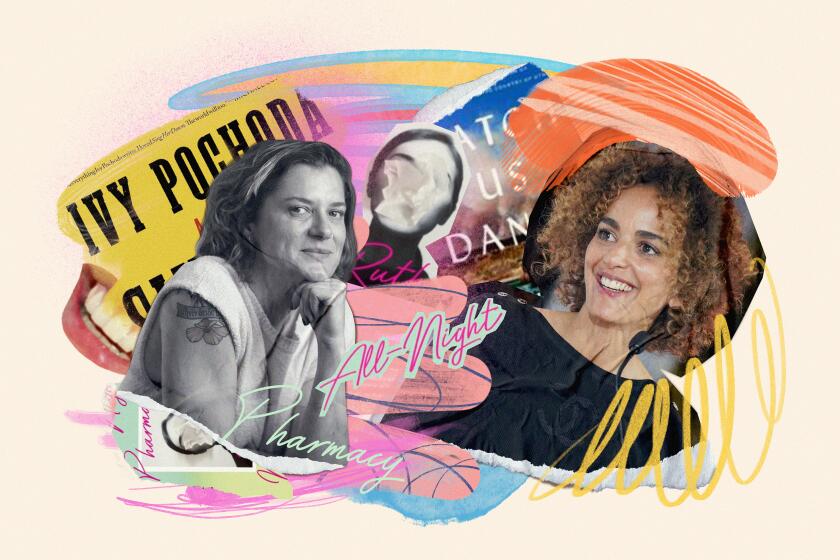Cults, cannabis and a little time travel: Edan Lepucki’s California novel is quite a trip

Summer Books Preview
Time's Mouth
By Edan Lepucki
Counterpoint: 416 pages, $28
If you buy books linked on our site, The Times may earn a commission from Bookshop.org, whose fees support independent bookstores.
When Edan Lepucki was working on the 1980s section of her forthcoming novel, “Time’s Mouth,” she found herself describing the streets of Los Angeles. A young couple, about to become parents, move to an apartment on Edinburgh Avenue — the same apartment where she grew up.
“I kept Melrose, I kept Wilshire, why can’t I keep Edinburgh?” she tells me over Zoom, bundled up on a chilly spring day. “Why should I change it to some fake name?” As much as this is about setting, it’s also about the connections we make between what we read and how we see the world.
The couple, Ray and Cherry, have escaped from a cult-like commune near Santa Cruz that is led by Ray’s mother. Justifiably fearing her wrath, they reinvent themselves and don’t tell their daughter, Opal, about their past. Over the generations, the family keeps many secrets, including an inherited ability to slip through time.
“There’s something a little bit mystical,” says Lepucki, an L.A. native. “If I put this magic stuff on my actual street, what will happen? Will it be imbued with this fictive energy? I kind of like that idea.”
The most anticipated fiction books of the summer includes new works from Lorrie Moore, Colson Whitehead, Ivy Pochoda, Tom Rachman and other great stylists.
“Time’s Mouth” follows three generations: Ursa, who comes to San Francisco in the 1950s and later founds the commune; Ray and Cherry trying to adjust to normal life in the Fairfax District in the 1980s; and Opal in Los Angeles in the 1990s, moving into a grand empty house surrounded by oil derricks. It is a story of motherhood and disjunction, of self-making and villainy, of a remarkable power depicted and deployed on an intimate scale.
We meet Ursa as a teenager, scarred by abuse, longing for escape, which she initially finds when she discovers she can travel through time — mentally, at least, and only to her own life’s moments. After running away to San Francisco, she will revisit her happiest childhood moments, her good times with a lover who later spurned her, her days mothering baby Ray.

Lepucki, who has three children, describes the feeling she wanted to explore. She remembers a key conversation with a friend who told her, “I don’t want to do parenting all over again. It’s too exhausting. But if I could just have a couple of minutes back when I first had my baby, or sit with my now-25-year-old son when he was a little boy, together on the couch.” At the time, Lepucki’s second child was just a baby, whose “old soul” gaze gave her a jolt of inspiration for the book.
Ursa develops her time-traveling skills in isolation, telling only one friend about what she can do. Luckily, that friend has inherited a mansion among the redwoods north of Santa Cruz, a semi-ruin that she hands off to Ursa as a place to explore and share her gift. Out in the forest, acolytes gather around her, seekers inspired by this idyllic California retreat, its mint tea rituals and cottage marijuana industry.
“People who lead cults, we think of them as conniving people who have an end goal in sight,” Lepucki says. Unlike, for example, the notorious NXIVM, Ursa’s cult forms by happenstance, yet she’s still the center of its power. “She was difficult for me to write,” Lepucki says. “She’s damaged and she wields that damage, hurts everybody around her.”
The plan was simple: We would start a book club for our 5-year-old sons.
The novel is a page-turning exploration of the intergenerational trauma of this very specific family with its unique gift, and the ways each new generation tries to heal itself. It means something different for Opal than it does for her father.
Like Lepucki’s real-life father, to whom the book is dedicated, Ray finds solace with an unorthodox therapist who follows Wilhelm Reich, a post-Freudian psychoanalyst. Most controversially, he conceived of the orgone energy accumulator, a human-sized box, which was banned by the FDA. Rumors of orgone boxes have swirled in alternative L.A. communities for years, but they remain impossibly rare. In the novel, however, Ray manages to build one.
Just as Reich connected mind and body, the physicality of Lepucki’s characters is part of the narrative, mundane and profound. “I want there to be sex in my books. I want there to be periods and childbirth and feeling bad. There’s a lot of vomiting,” she says, laughing. “I feel like in a lot of contemporary fiction, the characters are not in their bodies in the way that I think in life we are.”
Lepucki, who has degrees from Oberlin and the Iowa Writers’ Workshop and now teaches writing at Caltech, has found a place for her writing in the mainstream via women’s relationships, a California slant and a streak of darkness. Her 2017 novel, “Woman No. 17,” is a female-focused noir set in the Hollywood Hills. Her debut, “California,” a post-apocalyptic story of building community and art, was a breakthrough bestseller in 2014 — in part as the result of a dizzying set of events beyond her control.
Edan Lepucki, author of the dystopian novel ‘California,’ explains the power of ‘Parable of the Sower,’ the most popular speculative work on the Ultimate L.A. Bookshelf.
“California” was swept up in a power struggle between Amazon and Lepucki’s publisher, Hachette, with the help of Stephen Colbert. Lepucki herself made an appearance on “The Colbert Report.” Looking back on it now, she remembers being so anxious before the appearance that she couldn’t eat. Then, she says, “it was a lot of fun.” Colbert “was so friendly. Everyone on the cast and crew, it was the final season, they all adored him, so you could tell he was real nice, not just like fake-celebrity-nice.
“That experience, pretty much start to finish, was just an utter thrill. I was like, this is never gonna happen again, that a talk show host is going to champion my book.”
Now, almost a decade later, she has written one of California’s most anticipated books of the summer. And while it may be a little more grounded in history than her debut, it is definitely fiction. Lepucki wants people to know that for all the commonalities that “Time’s Mouth” has with her past, geographically and orgonically, it is a work of fiction. “My mother did not abandon me. My parents are not from a cult,” she says, reassuringly, with a laugh.
Kellogg is a former books editor at The Times.
More to Read
Sign up for our Book Club newsletter
Get the latest news, events and more from the Los Angeles Times Book Club, and help us get L.A. reading and talking.
You may occasionally receive promotional content from the Los Angeles Times.












